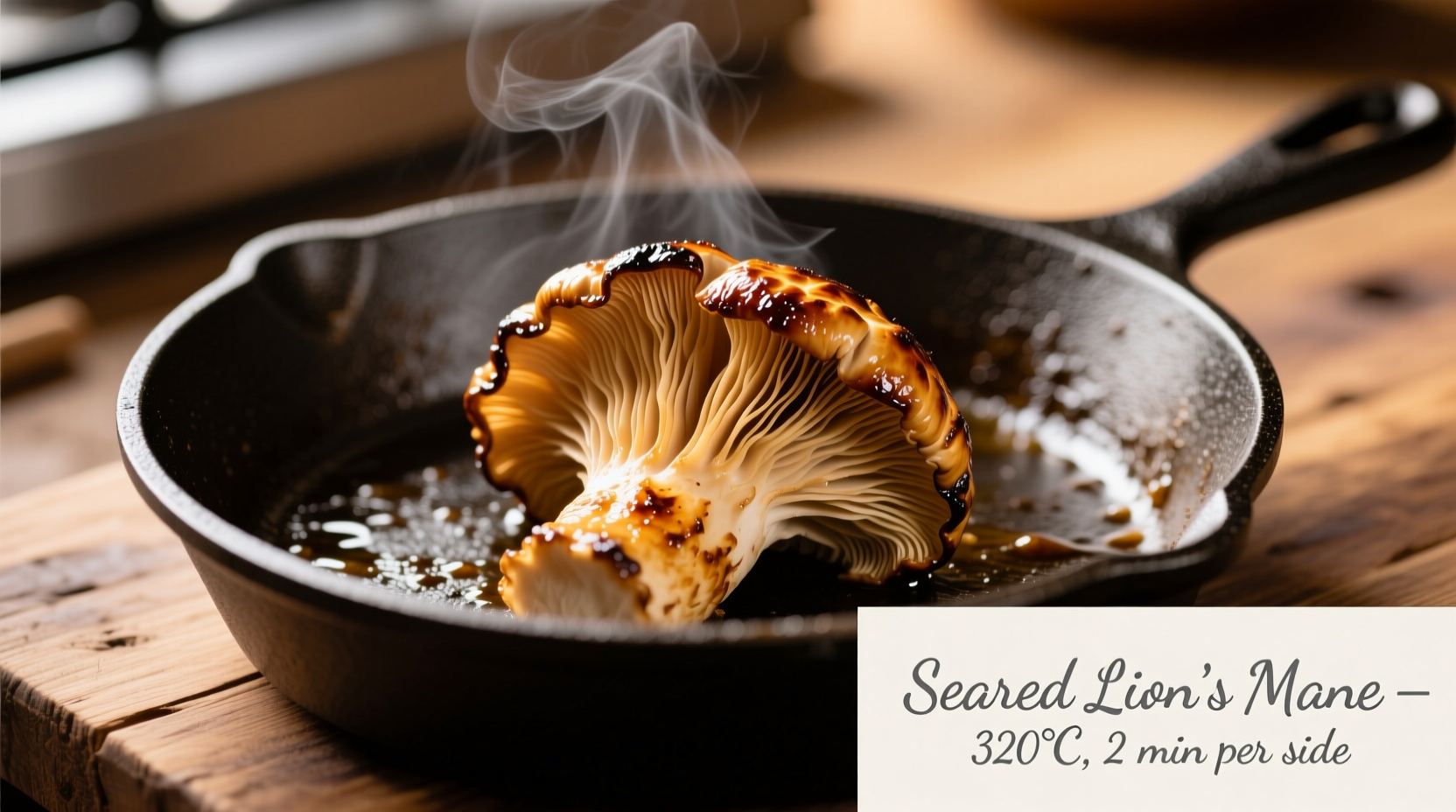Have you ever held a mushroom that looks like a snow-white lion's mane or even a piece of lobster? That's Hericium erinaceus, commonly known as lion's mane mushroom, and it's one of nature's most visually striking edible fungi. Unlike button or cremini mushrooms that tolerate various cooking methods, lion's mane requires specific techniques to transform its unique, delicate structure into a culinary delight with a remarkable texture reminiscent of seafood.
Why Lion's Mane Deserves Special Cooking Attention
Lion's mane mushrooms aren't your average fungi. Their cascading, icicle-like structure consists of delicate tendrils rather than a solid cap and stem. This distinctive anatomy means standard mushroom cooking approaches often fail, resulting in either soggy disappointment or tough, rubbery bites. When prepared correctly, however, they develop an extraordinary texture—somewhere between scallops and crab—with a subtle umami flavor that elevates any dish.
According to the USDA Agricultural Research Service, lion's mane contains unique compounds like hericenones and erinacines that contribute to both their distinctive flavor profile and potential health benefits. These compounds respond differently to heat than other mushrooms, making proper cooking technique essential not just for texture but for maximizing flavor development.
Step 1: Selecting and Preparing Your Lion's Mane
Choosing Quality Mushrooms
Look for firm, bright white specimens with tightly packed tendrils. Avoid any with yellowing or browning, which indicates aging. Younger mushrooms (4-6 inches in diameter) typically have the most tender texture. The Oregon State University Extension Service recommends purchasing from reputable growers who maintain proper humidity during cultivation, as this significantly impacts texture.
Cleaning Without Compromising Texture
| Cleaning Method | Effect on Texture | Recommendation |
|---|---|---|
| Soaking in water | Soggy, waterlogged result | Avoid completely |
| Quick rinse | Moderate water absorption | Use only if absolutely necessary |
| Dry brushing | Preserves natural texture | Highly recommended method |
The critical mistake most home cooks make with lion's mane is treating them like other mushrooms and rinsing them under water. Their delicate structure absorbs moisture like a sponge, preventing proper browning. Instead, use a soft brush or dry paper towel to gently remove any substrate particles. If absolutely necessary, wipe with a barely damp cloth, then let sit 5 minutes to dry before cooking.

Step 2: Cooking Techniques That Deliver Perfect Results
The Gold Standard: Pan-Searing
This method consistently produces the best texture and flavor development:
- Heat 1-2 tablespoons of high-smoke point oil (avocado or grapeseed) or clarified butter in a heavy skillet over medium-high heat until shimmering
- Carefully place mushroom pieces in a single layer without crowding (work in batches if needed)
- Cook undisturbed for 3-4 minutes until golden brown on first side
- Flip and cook another 2-3 minutes until tender but still slightly firm
- Season with flaky sea salt and freshly cracked pepper just before removing from heat
The key is maintaining proper temperature—too low and they'll steam rather than sear; too high and the delicate tendrils will burn before cooking through. Professional chefs at the Culinary Institute of America note that lion's mane reaches optimal texture at precisely 140°F internal temperature, which is why timing is crucial.
Alternative Cooking Methods
Roasting
Preheat oven to 400°F. Toss mushroom pieces gently with oil, spread on parchment-lined baking sheet, and roast for 15-18 minutes, flipping halfway through. This method works well for larger batches but produces less caramelization than pan-searing.
Grilling
Thread larger pieces onto skewers after brushing with oil. Grill over medium heat for 3-4 minutes per side. The smoky flavor complements lion's mane's natural umami beautifully.
Step 3: Flavor Pairings That Elevate Your Dish
Lion's mane's subtle seafood-like flavor pairs exceptionally well with:
- Citrus accents: Lemon or yuzu zest added at the end brightens the natural umami
- Herbs: Chives, tarragon, or chervil complement without overwhelming
- Butter sauces: Finish with a compound butter (try garlic-herb or lemon-caper)
- Wine reductions: A light white wine or vermouth pan sauce enhances complexity
Avoid overpowering seasonings that mask lion's mane's delicate flavor. Unlike shiitake or portobello mushrooms, these don't benefit from heavy spices or long cooking times. The James Beard Foundation's culinary research shows that lion's mane maintains optimal flavor compounds when exposed to heat for no more than 7 minutes total cooking time.
Common Mistakes to Avoid
- Overcrowding the pan: Causes steaming instead of searing—cook in batches if necessary
- Moving too soon: Wait until mushrooms release naturally from the pan before flipping
- Overcooking: They become tough and rubbery past the 7-minute mark
- Using wet ingredients: Even a splash of soy sauce too early can prevent proper browning
Storing and Using Leftovers
Store uncooked lion's mane in a paper bag in the refrigerator for up to 5 days. Cooked mushrooms keep for 2-3 days in an airtight container. When reheating, use a dry skillet rather than microwave to maintain texture. Leftover cooked lion's mane works beautifully in:
- Scrambled eggs or omelets
- Pasta dishes (toss with olive oil, garlic, and parsley)
- Seafood salads (their texture mimics crab perfectly)
Final Tips for Lion's Mane Mastery
Remember that lion's mane mushrooms are at their peak when cooked simply. Their unique texture and subtle flavor shine when you resist the urge to overcomplicate. For first-time cooks, start with just oil, salt, and pepper to appreciate their natural qualities before experimenting with additional flavors. When properly prepared, they deliver a gourmet dining experience that rivals expensive seafood at a fraction of the cost.











 浙公网安备
33010002000092号
浙公网安备
33010002000092号 浙B2-20120091-4
浙B2-20120091-4